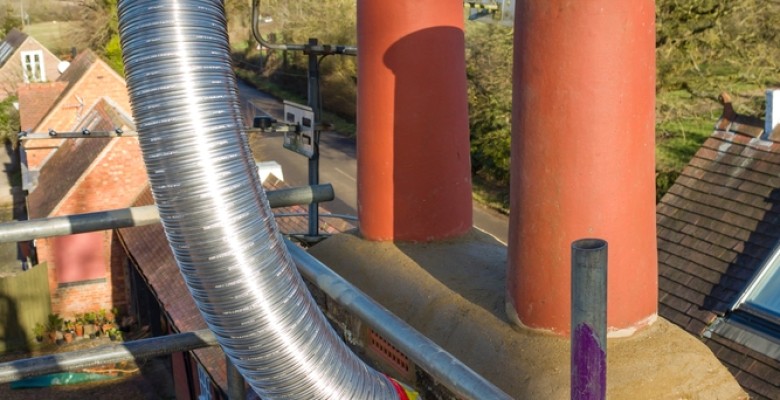
Flue Liners: Your Saint Louis Chimney’s Best Friend:
Chimney flue liners don’t receive much thought from Missouri homeowners, but they should. A properly installed chimney liner is absolutely vital in protecting your home’s chimney from degradation and your home from deadly chimney fires. Moreover, a properly installed chimney flue liner protects the surrounding walls, attic, and roofing from sparks, fumes, excessive heat, and combustibles, as well as helps the chimney properly vent. Before chimney liners were required by U.S. law in the mid-1950s, many chimneys lacked flue liners. Unfortunately, this oversight led to thousands of preventable and tragic chimney fires that can lead to damaging and deadly house fires. Today’s modern St. Louis chimneys and homes require proper flue liners to be installed and are typically inspected prior to or during a home sale transaction. Flue liners are basically part of your home’s heating, cooling and ventilation system.
The Modern Chimney Flue Liner: Metal: Flexible and Rigid:
Metal flue liners have become the most common flue liners due to their simplicity of installation and price. Metal chimney flue liners are much easier to install than either cast-in-place or clay tile liners. Flexible metal liners are typically used, especially if the chimney is not straight with bends or offsets. Another advantage of the flexible flue liners is that it resists creosote build-up and can contract and expand with high temperatures. Rigid flue liners can be used when a chimney is built straight with no deviations. Metal flue liners, flexible or rigid, are typically the best choice for chimneys that require a liner replacement or existing chimneys that lack any kind of liner. Some older homes in St. Louis, specifically those built before the mid-1950s, may lack a proper flue liner, and thus, require one, especially if that structure has a wood-burning or gas fireplace.
Metal chimney flue liners have a few drawbacks and limitations:
- More susceptible to corrosion.
- Condensation. This, however, can be reduced or eliminated through the use of insulation.




Social Network